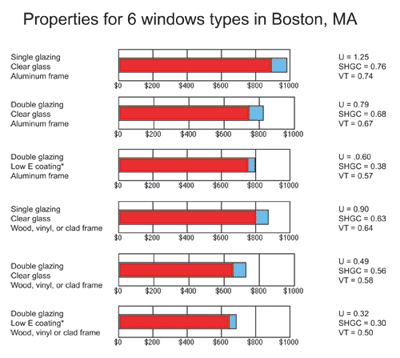Building Green with Windows and Doors
The Window Frame
While glazing deserves the first attention when considering ways that windows can control the sun's energy, the frame, which makes up approximately 20 percent of the window area, also plays an important part in the overall performance of a window. In addition, paint finishes on cladding add durability and longevity. Specifications for finishes on window frames, sash and cladding are administered by the American Architectural Manufacturers Association (AAMA). Certifications for windows and doors are provided by the Window and Door Manufacturers Association (WDMA) or the American Architectural Manufacturers Association (AAMA).
In terms of heat transfer, however, one of the most important features of windows and doors, according to Michael Rosenfeld AIA LEED, is how well they stay closed to allow minimum air infiltration. Known for his daylighting design and as a practitioner of Green Building since the 1960s, he maintains that not only is tight glass-to-glass, frame-to-frame and sash-to-sash construction essential, but that interlocking hardware that uniformly seals the sash and frame is critical.
|
Frames and sash can be made of one or a combination of the following materials: aluminum, wood, clad wood, vinyl and fiberglass.
*Aluminum is light, strong and durable, making it ideal for custom window design. Aluminum frames also require low maintenance. One disadvantage is that they cause conductive heat loss, which affects the U-Factor and decreases energy efficiency. They also allow for condensation buildup.
Extruded aluminum or roll-form aluminum clad windows and doors both use an easily recycled material that is five hundred times more thermally conductive than pultruded fiberglass, can easily be scratched or dented and will corrode over time. Aluminum is made from bauxite, which is costly to mine but is recyclable.
*Wood is useful for achieving a traditional look. From a performance standpoint, wood provides solid energy efficiency (less dense softwoods have an average R-Value of about 1.25/inch). The biggest drawback from using wood is maintenance. Wood must be protected from moisture because it is susceptible to degradation if not painted. Periodic painting will keep wood windows performing well year after year as demonstrated in many pre-Revolutionary buildings. Since unclad wood windows require painting, designers have the option of specifying a low volatile organic chemicals (VOC) emission paint product.
|










